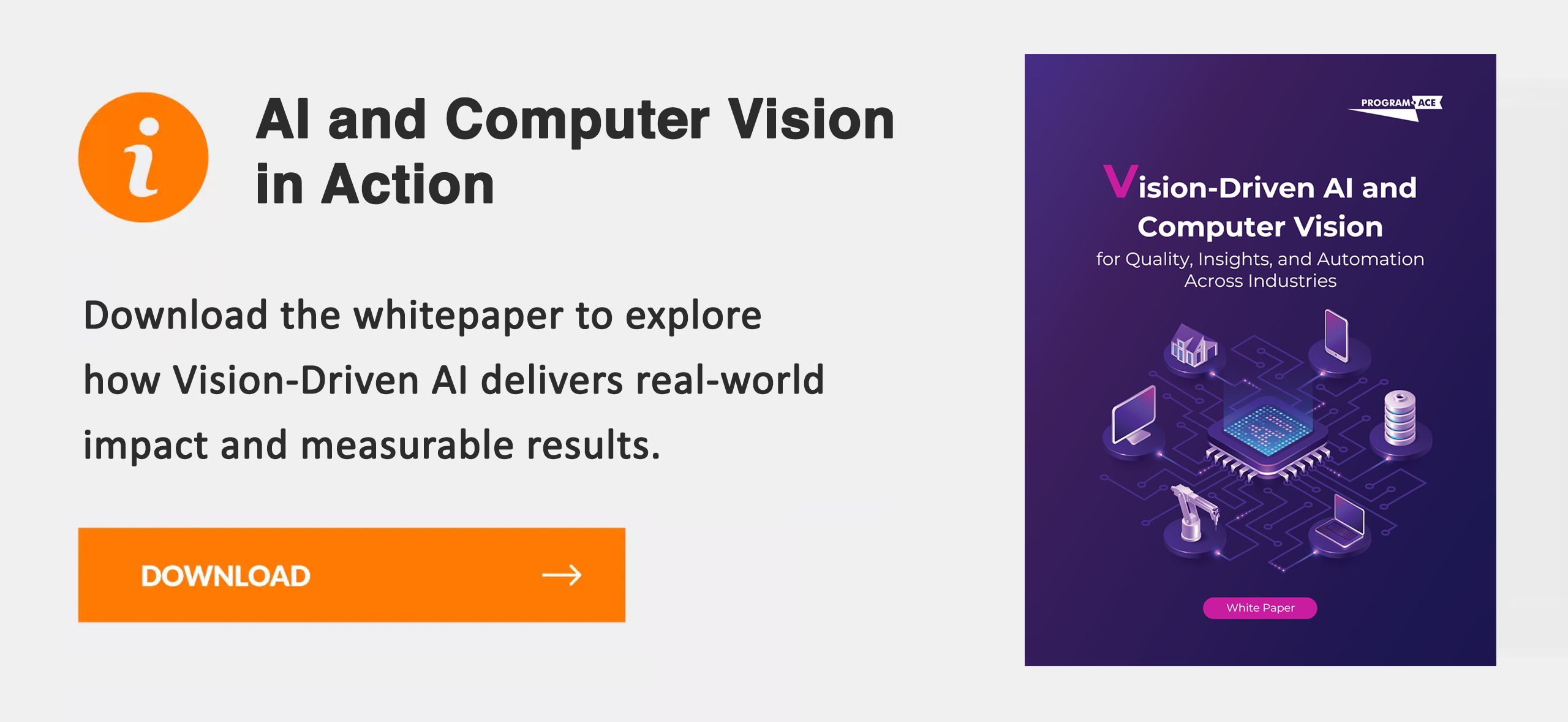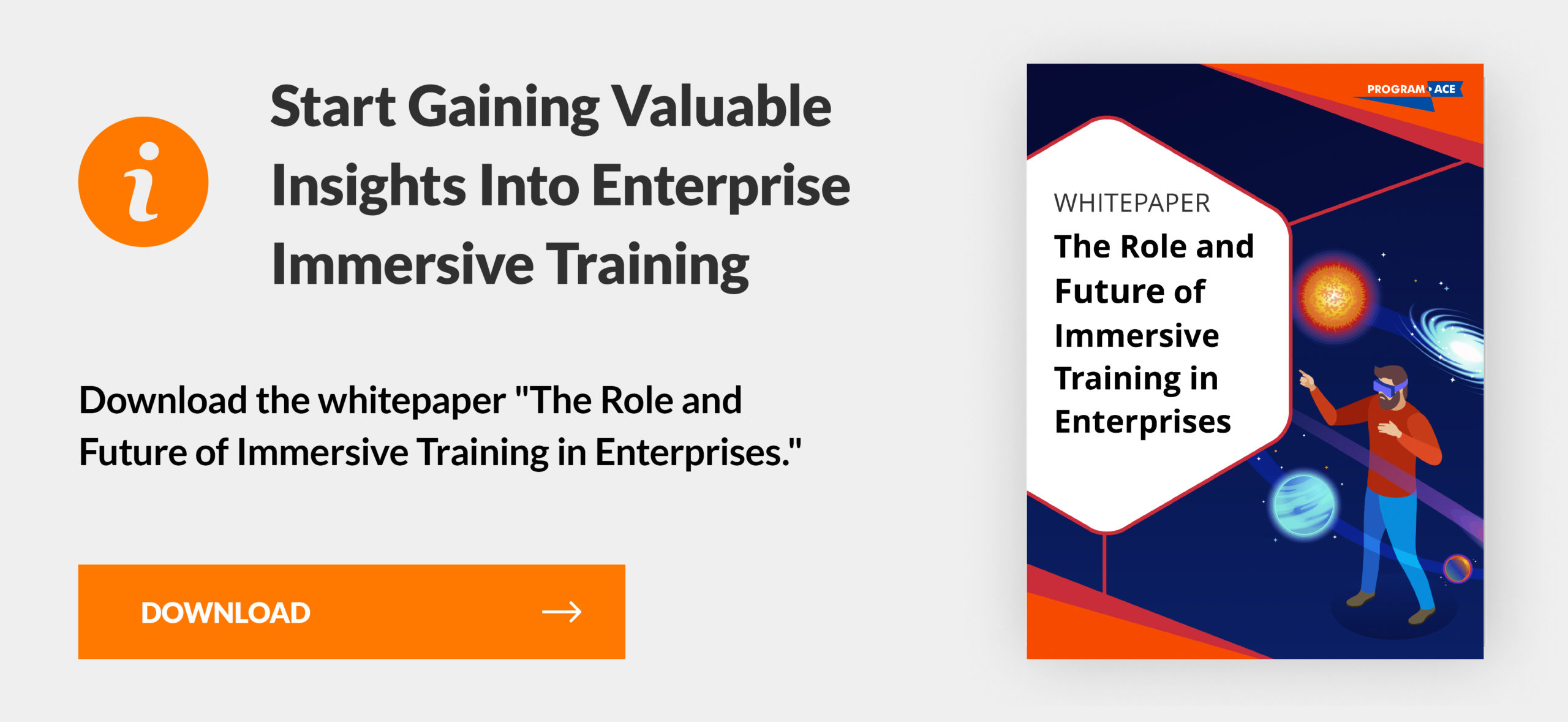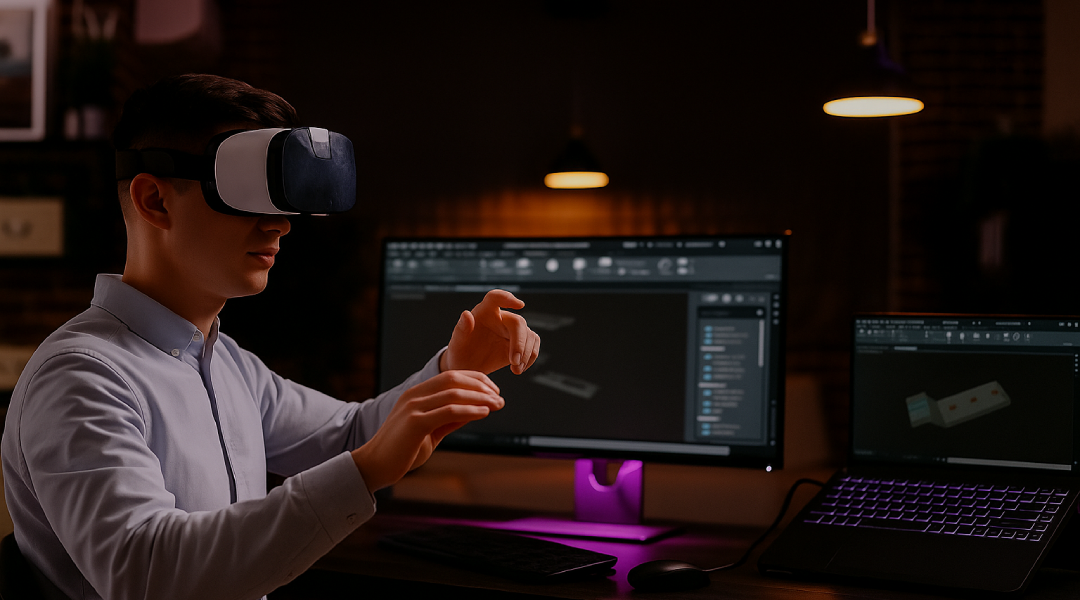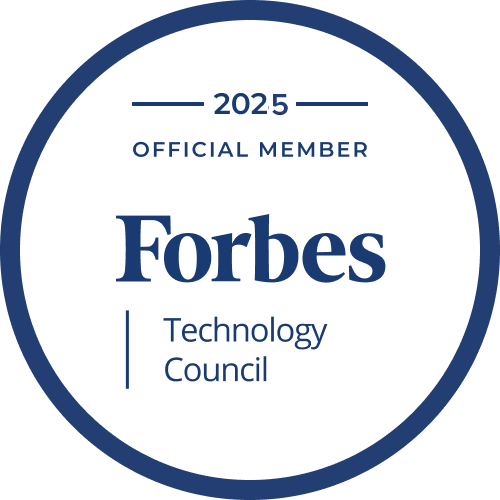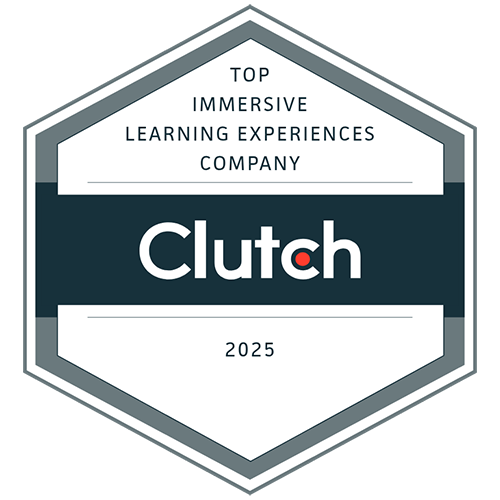Virtual training solutions are no longer limited to simple simulations or basic tutorials. Today, teams use them to build real skills through controlled digital environments that replicate complex scenarios. From equipment handling to soft skills, each use case now benefits from targeted design, clear goals, and measurable progress.
Companies rely on virtual training solutions to reduce onboarding time, improve safety, and deliver consistent instruction at scale. Training is no longer tied to physical classrooms or printed manuals. Workers can now interact with dynamic content, make decisions, and receive direct feedback, all inside a virtual setting.
Adoption is also growing because the tools have become more flexible. AI systems personalize content. AR and VR expand what can be taught remotely. Teams can now simulate rare events, test responses, and correct mistakes without real-world consequences.
Every year, more industries replace outdated instruction methods with structured virtual training solutions. The shift is not theoretical. It’s already happening in logistics, healthcare, construction, and manufacturing. This article explains what’s changing, how it works, and why it matters.
From Static Courses to Smart Virtual Learning Training Journeys
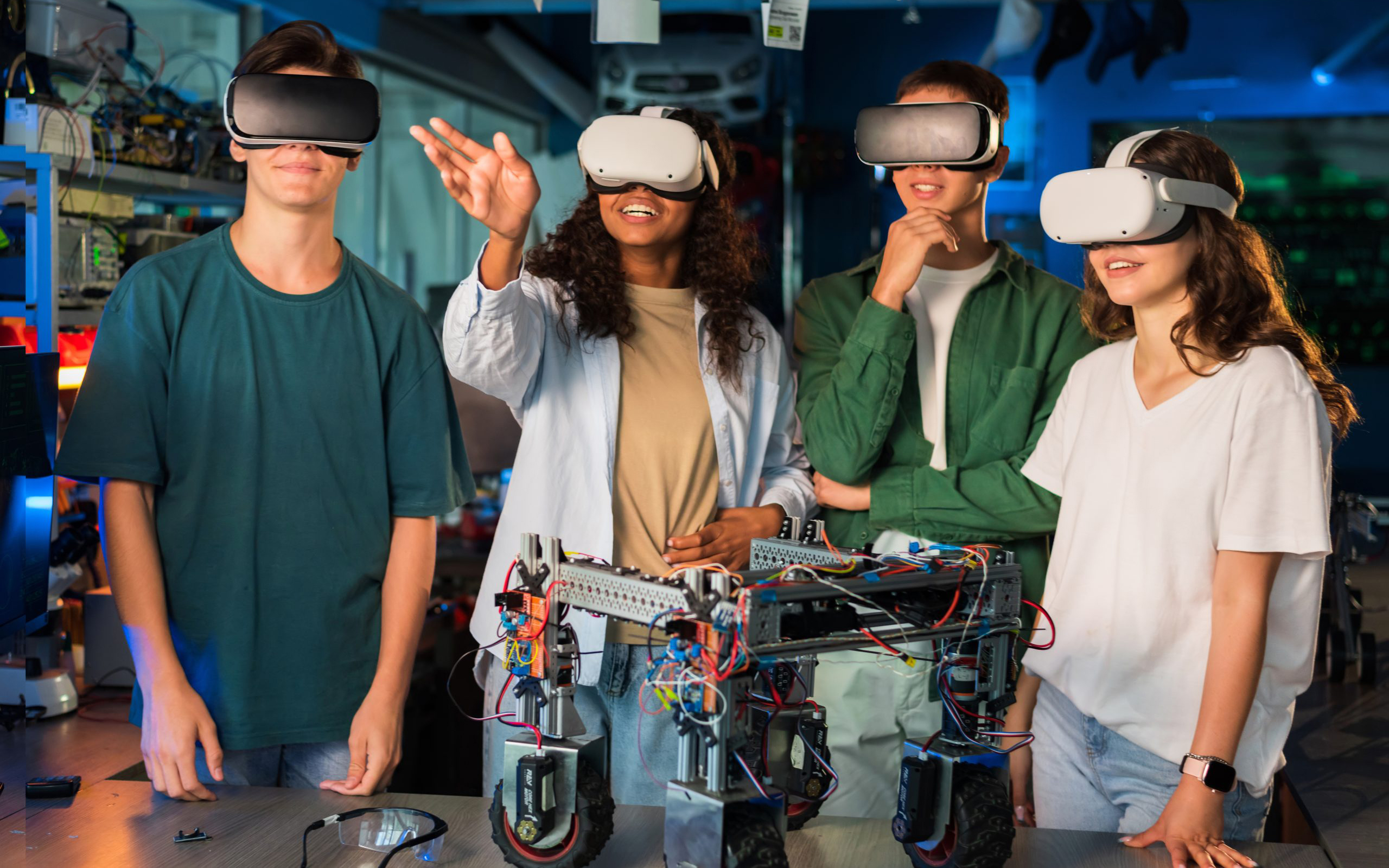
Early virtual learning offered static content. Learners clicked through slides, watched pre-recorded videos, and answered basic quizzes. Nothing changed based on their performance or role. Everyone received the same course, regardless of their needs or experience level. As a result, outcomes were often limited. Skills didn’t transfer well into real jobs, and engagement stayed low.
Now, virtual learning is far more dynamic. You can design learning paths based on performance data, job roles, and training history. Instead of generic courses, workers receive targeted programs that match their current skill level. AI systems adjust the difficulty, skip what’s already known, and push learners toward real improvement.
For example, a warehouse employee might begin training with basic item-picking procedures. Once they pass, the system unlocks programs on hazardous material handling or route optimization. If errors occur, the program repeats key tasks until performance improves. Virtual learning becomes a cycle of input, feedback, and progress, not a one-time session.
This kind of structure matters. It helps reduce onboarding time, prevents workplace errors, and builds confidence faster. Companies like DHL and Siemens already apply similar systems across operations. You can do the same, starting small and expanding as you track results.
The Shift to E-Learning and Training Platforms: What Changed and Why It Matters
E-learning and training platforms have replaced rigid classroom setups with flexible systems you can control. You no longer need to schedule sessions, print manuals, or rely on instructors alone. Instead, you assign courses, track progress, and update materials instantly. Workers access content from any location and move at their own pace. Changes like these have a direct impact on how quickly people learn, retain, and apply new skills.
The Decline of One-Size-Fits-All Education Models
Standardized courses no longer match how people learn on the job. Static content treats everyone the same, but job requirements, skill levels, and learning speeds vary widely. Expecting a single course to work for all roles can lead to wasted time and uneven results.
You now have access to tools that break down content by role, skill gap, and performance level. Workers avoid unnecessary modules and focus only on what matters.
Common problems with generic training:
- Limited engagement. Workers lose interest when content doesn't match their needs.
- Wasted time. Spending too many hours on irrelevant lessons reduces productivity.
- Low retention. Information not tied to real tasks doesn't stick.
- Inaccurate assessment. Generic quizzes miss role-specific mistakes.
Custom paths help workers learn faster, and managers see clearer progress. Leading platforms already support role-based content delivery and branching scenarios. You can apply the same methods, starting with key job roles where mistakes are costly or turnover is high.
Data-Driven Personalization in E-Learning and Training
Personalization used to mean choosing your course. Now, it means the system adapts in real time based on what people do, not just what they click.
Modern e-learning platforms collect data on:
- Answer patterns. Track accuracy and speed to measure comprehension.
- Repeat attempts. Identify which tasks require extra practice.
- Engagement time. The spot where learners hesitate or skip.
- Simulation outcomes. Record performance in realistic tasks.
With this data, the platform adjusts the path. If someone struggles, it adds extra steps or explanations. If they excel, it skips ahead, and you can measure it. Organizations like IBM and Schneider Electric use these systems to scale training globally without losing individual focus. You can follow that example by starting with one course and building logic that adjusts based on clear performance triggers.
Compliance, Certification, and Rapid Skills Alignment
Meeting regulatory standards and skill requirements used to take weeks of manual tracking and paperwork. Now, you can automate much of the process.
Benefits of integrated compliance training:
- Centralized tracking. Every certificate, score, and attempt stay logged.
- Automated alerts. Reminders help workers renew certifications on time.
- Version control. Everyone receives the latest updates without confusion.
- Proof on demand. Reports are exportable and audit-ready.
Rapid skill alignment matters most when job roles shift. During system rollouts or equipment upgrades, you can release micro-courses focused on specific tools or procedures. Workers complete only what’s new, with no need to start over. Sectors like healthcare, aviation, and finance already rely on these functions to meet legal and operational standards. You can apply the same setup to track skills, reduce audit risks, and get teams job-ready faster.
Smart Assistants and AI Tutors Humanizing the Learning Process
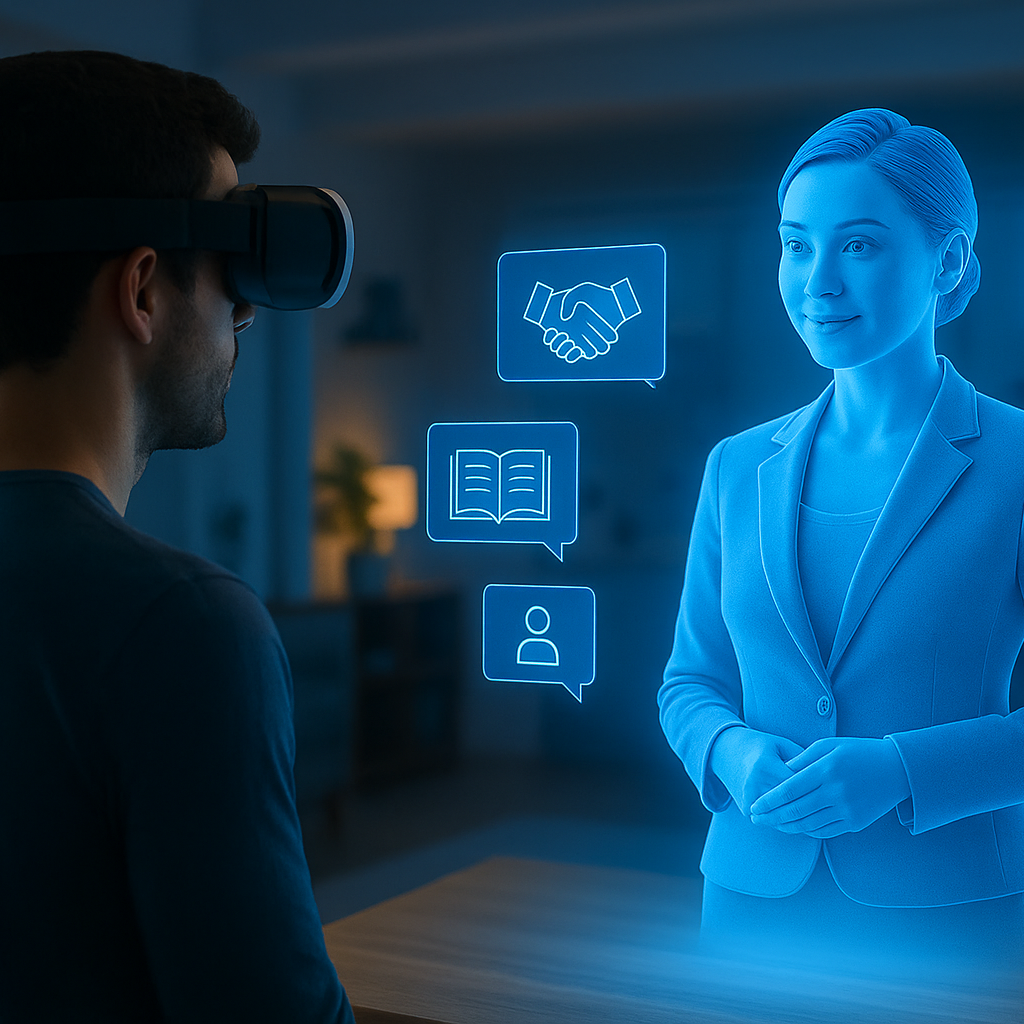
AI tutors now support learners in ways that feel less mechanical and more personalized. You can offer online soft skills training with AI-driven assistants that provide timely prompts, correct tone-of-voice issues, and simulate real conversations. Instead of static practice, people interact with dynamic characters that respond naturally. Feedback becomes immediate, and sessions feel more engaging. You improve communication training without needing extra staff, and learners stay active, not passive, throughout the process.
NLP-Based Feedback Systems That Mimic Human Instructors
Natural language processing (NLP) enables AI to interpret and respond to speech and text with human-like precision. You no longer need to rely solely on scripted feedback or rigid multiple-choice responses.
AI-powered feedback systems can now:
- Analyze word choice. Point out passive phrasing or inappropriate tone.
- Evaluate structure. Suggest better ways to organize responses.
- Model active listening. Offer backchanneling phrases and follow-up questions.
- Correct in real time. Guide users during the interaction, not after.
- Track progress. Store performance data across sessions for continuous improvement.
In online soft skills training, these tools are especially useful. You can simulate customer service calls, negotiations, or interviews with virtual characters that react naturally. Companies like Google and Coursera have integrated similar systems into their training tools. You can implement them for customer-facing teams, support staff, or leadership coaching programs.
Predictive Learning Paths Based on User Behavior
Observing how learners interact enables the creation of predictive models to inform future content development. You can use this to shorten learning time and keep each session focused and productive.
Instead of repeating whole courses, the system can:
- Skip mastered topics. If a user shows consistent accuracy, the next section adjusts the difficulty.
- Pause weak points. Struggle with a concept triggers extra tasks or explanations.
- Suggest content. Based on patterns, the system recommends review or enrichment material.
- Forecast outcomes. Performance trends help estimate if someone will pass or fail a certification.
This kind of personalization increases motivation. Learners feel seen and supported. Companies like Duolingo and LinkedIn Learning already use similar logic. You can apply the same structure in technical training, compliance updates, or leadership solutions.
AI’s Role in Performance Evaluation and Retention Boost
AI can score more than test results. You can apply it to simulations, spoken responses, and on-task behaviors. The system doesn't just assign a number; it also shows you why someone's performance stands where it does.
Here's how it adds value:
- Identifies weak spots. AI highlights the exact steps where people fail.
- Connects outcomes. Ties user actions to training objectives and goals.
- Flags drop-off risks. Detects when a learner is likely to disengage.
- Recommends follow-up. Suggests targeted content to reinforce skills.
Instead of waiting for feedback from a trainer, learners see their progress instantly. And instead of relying on end-of-course surveys, you track results with real data. Airlines, call centers, and healthcare providers already apply this kind of evaluation. You can start by adding AI scoring to just one training module and then scale it based on how much visibility you need into team performance.
Find your perfect virtual learning solution with our experts.
AR/VR Learning in Training Moving Beyond Video Modules

Video content serves its purpose, but it’s not enough for practical skill development. You can now use AR/VR learning in training to deliver experiences that require interaction, decision-making, and physical action. VR places them inside high-risk scenarios, while AR overlays real-time instructions in their actual work environment. Both approaches offer hands-on learning without halting real operations. You make training faster, safer, and far more relevant to the tasks people perform.
Simulation-Based Skill Acquisition in High-Stakes Roles
Certain roles demand perfection. A mistake made by an operator, technician, or healthcare worker can cause serious harm. Traditional learning methods fall short here. With simulation-based AR/VR training, you recreate job-specific environments that allow workers to fail safely and learn quickly.
Industries already applying simulation training:
- Aviation. Pilots rehearse takeoff failures, turbulence responses, and emergency procedures.
- Energy. Plant workers practice hazard detection and system shutdowns.
- Healthcare. Surgeons use VR to repeat complex procedures before real operations.
- Manufacturing. Assembly line staff rehearse part replacements and error identification.
You can use the same tools to teach machinery operation, emergency protocols, or teamwork in high-pressure settings. Every simulation provides feedback on timing, accuracy, and process adherence. People gain confidence while reducing real-world risk.
Gap Inc. Applies Virtual Learning to Emergency Preparedness at Scale
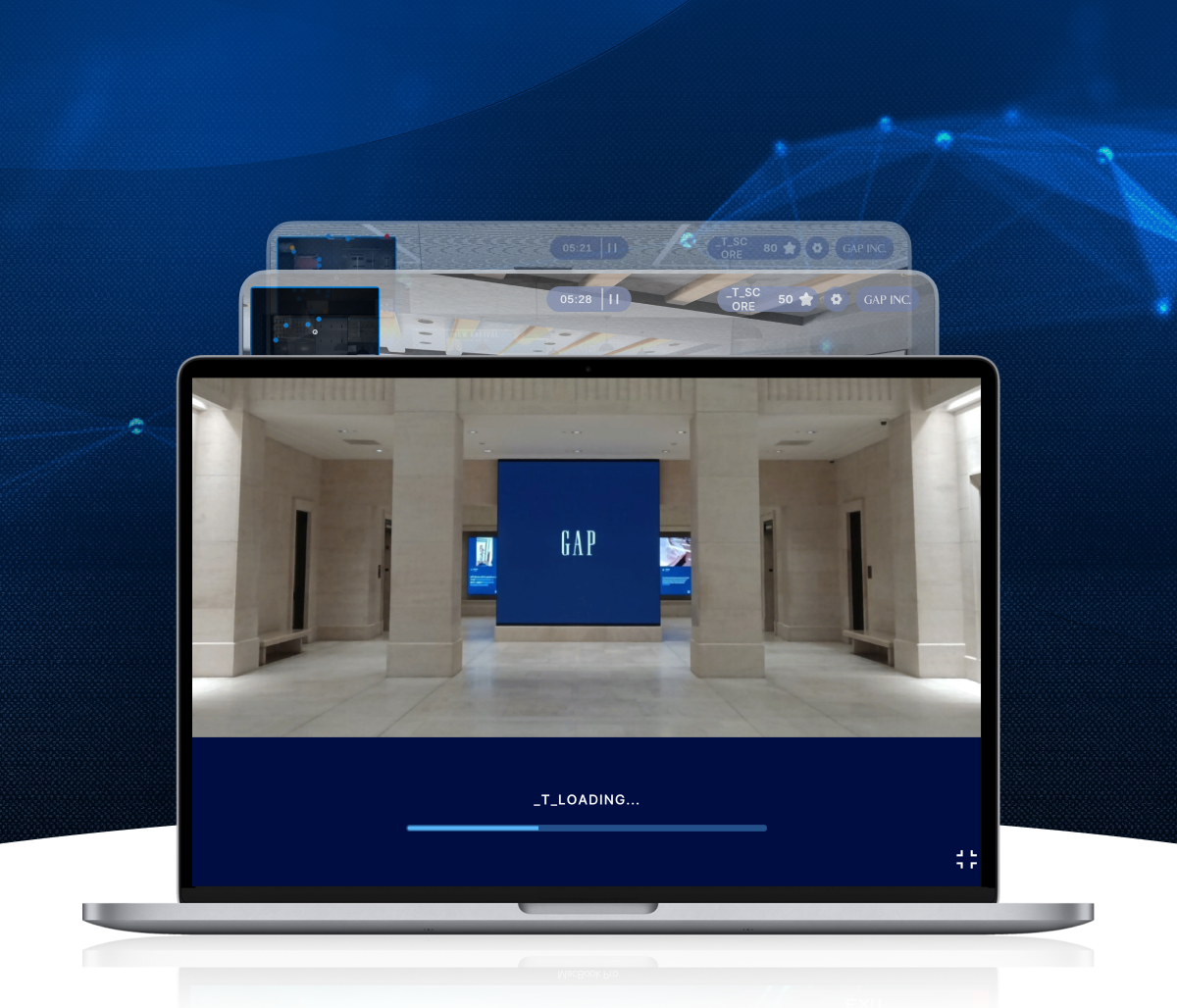
Gap Inc. collaborated with Program-Ace to develop a fully immersive training experience for active shooter scenarios. The platform uses interactive 3D simulations to replicate high-stress emergencies without real-world risk.
AR for On-the-Job Guidance and Just-in-Time Learning
AR allows you to give instructions exactly when and where they're needed. Instead of reading manuals or waiting for help, workers see guidance directly in their field of view. Smart glasses or mobile devices show what part to handle, what tool to use, and what steps to follow next.
Typical applications include:
- Equipment servicing. Step-by-step overlays show how to disassemble, inspect, and reassemble parts.
- Quality control. Visual markers indicate standards, tolerances, or inspection points.
- Remote support. Experts see what the worker sees and guide them through AR.
- Safety checks. Real-time prompts confirm PPE, procedures, and lockout steps.
Instead of training weeks in advance and hoping retention holds, you deliver help at the moment. Firms like Boeing and Siemens already rely on AR to maintain accuracy in complex workflows. You can follow the same model for maintenance, assembly, or field services.
Blended Reality Labs for Complex Concepts
Some concepts are too abstract to be effectively conveyed through slides or video. Blended reality labs enable people to explore these ideas through action rather than just observation. You combine real-world objects with digital overlays to create interactive learning environments.
Imagine teaching fluid dynamics, circuitry, or chemical safety. You can build labs where:
- Sensors react. A learner adjusts a valve, and the system displays changes in flow rate.
- Digital content aligns with physical tools. They hold a real wrench while viewing a virtual system map.
- Errors trigger feedback. Incorrect steps result in visual or haptic cues to reinforce correct behavior.
- Progress adapts. Once users complete a task accurately, the system presents a more challenging version.
Blended labs shorten theory-to-practice time. People grasp ideas faster when they can apply them instantly. Schools, labs, and industrial firms use them for STEM learning, technical certification, and safety instruction. You can apply the same approach with off-the-shelf kits or custom modules tied to your operations.
Real-World Success Stories: Virtual Learning Training in Action
Virtual learning training has moved from theory to practice across industries. Retailers, manufacturers, and financial institutions are implementing these tools to enhance onboarding, minimize errors, and expand educational offerings. Scenario-based learning, AR/VR solutions, and AI tutors are no longer experimental.
Manufacturing Upskilling Through AR/VR Learning in Training
Manufacturing environments require precision and safety. Traditional training methods often fall short in preparing workers for complex tasks. AR/VR learning in training offers immersive experiences that bridge this gap.
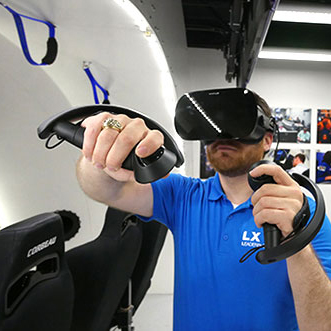
For example, Boeing utilizes VR technology to simulate assembly processes, enabling engineers to test designs and workflows without physical prototypes. This allows teams across departments to collaborate in a shared virtual space, identifying design flaws or inefficiencies before they reach the manufacturing floor. Such an approach enables rapid iteration and problem-solving, thereby enhancing both design and training efficiency.
Financial Institutions Standardizing Risk Training with AI Tutors
Traditional training methods can be time-consuming and inconsistent. AI tutors offer a solution by providing personalized, scalable, and efficient training experiences.

For instance, Morgan Stanley and Bank of America have implemented AI-powered tools to enhance internal operations and employee efficiency. Morgan Stanley introduced tools like the Morgan Stanley Assistant and Debrief, powered by GPT-4, to help advisors retrieve insights from internal documents and summarize client meetings. Bank of America utilizes a four-layer AI framework, incorporating generative AI, to support staff in managing complex tasks.
Additionally, workshops such as the AI-driven risk management in finance workshop provide case studies on using AI to enhance risk management practices. The sessions cover AI model validation techniques, setting AI risk appetites, and navigating the regulatory landscape.
The Cost-Efficiency of Virtual Learning Training Models
You no longer need to choose between quality and cost. Virtual learning training models lower expenses while improving consistency across roles. Soft skills training, compliance refreshers, or technical upskilling all scale faster when delivered online. You reduce overhead tied to travel, physical classrooms, and instructor scheduling. At the same time, your employees learn in formats that match their daily tools and workflows. Savings are evident not only in the budget but also in reduced delays, errors, and onboarding time.
Initial Investment vs. Long-Term ROI
Spending on software, content development, or headsets may seem high at first. That changes once you calculate the ongoing costs of in-person training over time.
- Fewer instructors are needed. One recorded course supports hundreds of learners.
- No travel budgets. Employees train on-site or remotely, eliminating the need for flights or hotels.
- Faster onboarding. New hires reach productivity targets weeks earlier.
- Reusable modules. Updates apply instantly without reprinting manuals.
- Fewer errors. Staff trained through simulations make fewer costly mistakes.
Soft skills training, once limited to workshops, now runs through AI simulations that adapt in real time. Firms that switched to digital formats report lower turnover and stronger client feedback. You can start with just one team or course, then measure ROI over six months by tracking training hours, completion rates, and post-training job performance.
Reducing Travel, Downtime, and Facility Dependency
Employees don’t need to pause work for three days and travel to another city. You can run training directly in the flow of work. Modules fit into 20-minute windows. People apply new skills right away. That flexibility reduces disruption.
Facilities used to be the main bottleneck. Now, you don’t need to reserve rooms, coordinate equipment, or manage catering.
Benefits you’ll notice right away:
- No location limits. Remote teams learn together, no matter where they’re based.
- Shorter sessions. Daily routines stay intact while training continues.
- Less strain on trainers. No repeating the same content multiple times.
- Faster rollout. Launch company-wide programs in days, not weeks.
For example, DHL transitioned to virtual training for supply chain operations, resulting in a reduction of about 60% in both travel costs and training delays. You can make a similar shift by first moving one recurring session online and then expanding based on employee feedback.
Licensing, Scalability, and Maintenance in Modern Platforms
Managing licenses for virtual platforms is simpler than it used to be. Most vendors offer per-user or flat-rate pricing. You avoid unpredictable expenses.
You can also scale without redoing the infrastructure. A course built for 30 people can train 3,000 without changes. As your team grows, the system adjusts.
- Add users instantly. No need for new classrooms or staff.
- Update content fast. Replace modules without restarting a program.
- Track usage. See who’s completed what and identify gaps.
- Maintain less hardware. One system supports web, mobile, and VR devices.
- Audit ready. Export records to meet compliance requirements.
Soft skills training works especially well at scale, as AI tutors can personalize feedback while maintaining consistent delivery. Schools, banks, and healthcare networks already rely on such systems to meet strict timelines. You can use similar tools to save time and maintain training quality as you grow.
Barriers to Adoption and How Forward-Thinking Leaders Are Overcoming Them
Switching to virtual learning training brings clear benefits, yet some obstacles can delay your rollout. Technical compatibility, internal skepticism, and limited content resources often slow progress. Instead of waiting for perfect conditions, you can address each issue in phases. Forward-thinking leaders start with pilots, gather data, and scale once results are proven. By adapting gradually and fixing only what matters most, you avoid stalling transformation and gain long-term control over learning delivery.
Technical Integration and Legacy Infrastructure
Old systems don’t always support new tools, but that doesn’t mean you’re stuck. Virtual training platforms now offer APIs, cloud hosting, and LMS compatibility that allow you to plug in instead of rebuild.
- APIs link systems. You keep your HR data while syncing progress across tools.
- Cloud setups scale. No need for on-site servers or hardware upgrades.
- Single sign-on simplifies access. Users avoid extra logins or delays.
- Backward compatibility matters. Platforms load on older browsers and machines.
- Offline options exist. Certain modules work without full internet access.
Manufacturers with 10–15-year-old systems have added VR without replacing backends. You can start the same way by choosing tools designed to layer over what you already use. Focus on quick wins: a safety module that syncs with your compliance tracker or a soft skills course embedded in your HR platform.
Learner Resistance and Adoption Strategies
New formats feel unfamiliar, especially to teams used to classroom training. Resistance shows up as low engagement skipped modules, or negative feedback.
You can shift perception by focusing on value:
- Start with problems they care about. Tie content to daily frustrations or risks.
- Use champions. Early adopters help explain benefits and answer concerns.
- Avoid long sessions. Short modules reduce stress and raise completion rates.
- Add recognition. Completion badges, small prizes, or team shoutouts boost buy-in.
- Show results. Share how training improved outcomes or saved time.
When users see personal gains, adoption grows. You can increase trust by allowing learners to preview modules and offer anonymous feedback.
Content Creation Bottlenecks and Solutions
Building training content takes time, especially if your team lacks design skills. Delays arise from the need for approvals, formatting modules, and aligning sessions with policy frameworks.
That doesn't mean you must build everything from scratch:
- Use templated structures. Pre-built module formats save hours.
- Buy content where it makes sense. Off-the-shelf soft skills libraries are widely available.
- Work with subject matter experts directly. Skip unnecessary intermediaries.
- Use AI tools for drafts. Generate quizzes or summaries from transcripts.
- Set fixed update cycles. Small monthly edits prevent long overhauls.
The U.S. Department of Education recommends microlearning modules for higher retention and faster deployment. You can apply the same principle by starting with basic voiceover slides or short checklists. Once your team sees value, they'll request more content.
The Future of E-Learning and Training: Adaptive, Measurable, Immersive
E-learning and training are moving far beyond passive formats. You now have access to tools that respond in real time, measure skill performance, and engage users through immersive formats. Content adjusts automatically based on learner behavior, while performance metrics give you clear feedback. Results become easier to track, personalize, and apply to real tasks. Simulation training, wearable inputs, and edge delivery create new options for how, where, and when learning happens.
Multi-Sensory Training Solutions for Better Retention
Retention improves when users are fully engaged. Multi-sensory formats, encompassing audio, visual, and tactile elements, lead to deeper learning compared to text or video alone. Simulation training, in particular, enables learners to interact with digital environments while applying theoretical concepts in practical situations.
Core elements that make the difference:
- Audio guidance. Voice instructions reduce confusion during simulations.
- Visual cues. Markers, highlights, and spatial movement reinforce procedures.
- Haptic feedback. Vibrations and resistance simulate tool handling or reaction.
- Scenario branching. Outcomes shift depending on the decisions made.
- Performance logging. Each move contributes to an overall skill map.
Integrating Biofeedback and Emotion Recognition
Stress affects learning, and emotional signals often reveal when someone is struggling. Biofeedback tools, paired with emotion recognition, help you adjust training in real time based on how a learner reacts.
Sensors and cameras can:
- Track heart rate. Measure stress responses to assess realism and pacing.
- Detect facial microexpressions. Identify confusion or frustration.
- Monitor eye focus. Ensure attention is on the task at hand.
- Adjust intensity. Systems adjust difficulty levels based on biometric cues.
- Log emotional state trends. Instructors gain insight into engagement over time.
Cross-Platform Continuity and Edge Deployment
People train across locations and devices, which creates technical complexity. Cross-platform systems solve this by allowing a single session to continue across desktop, tablet, VR, or mobile.
The benefits are:
- No platform lock-in. You switch between devices without losing data.
- Consistent user experience. Visuals and logic remain the same everywhere.
- Offline access. Remote sites still run modules through edge computing.
- Faster response times. Content loads locally without server lag.
- Secure syncing. Progress updates once a stable connection returns.
Rethinking Virtual Learning Training with Program-Ace
You don't need to piece together your training strategy from disconnected tools. Program-Ace supports you as an innovative solutions integrator with experience across industries, platforms, and technologies.
Virtual learning training should work for your environment, your learners, and your outcomes, not the other way around. That's why Program-Ace adapts each solution to match your workflows, system requirements, and training goals. You can expect scalable platforms, measurable outcomes, and clear support throughout the process.
Soft skills solutions, AR-guided maintenance tools, or AI-powered tutors are just a starting point. You decide how far to expand and when. The team helps you assess what will bring the fastest results and then builds on that momentum.
Want to see how it could work for your team? Contact us to discuss your virtual training objectives and get practical recommendations tailored to your case.
